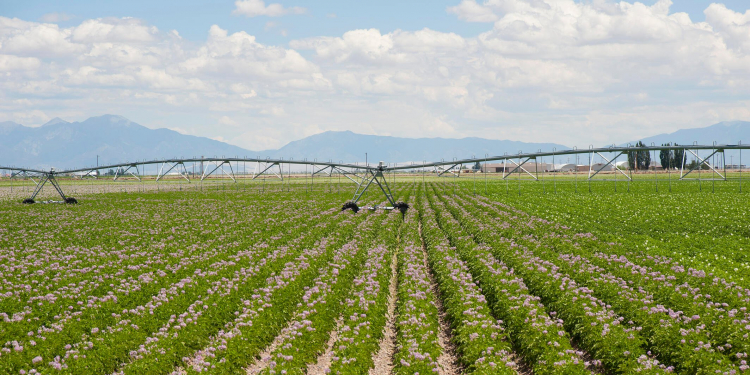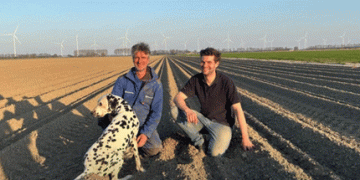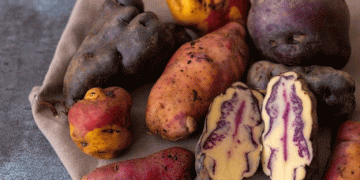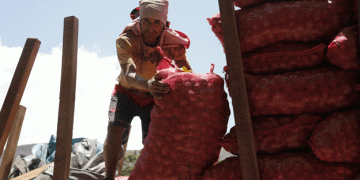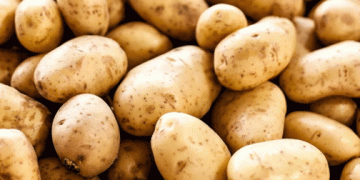For generations, farmers in Victoria’s west have grown some of Australia’s most productive crops. But they are concerned this is about to change.
Key points:
- The Western Victorian Transmission Network Project proposes high voltage transmission lines to transport renewable energy from Bulgana to Melbourne
- Farmers are concerned transmission line easements through their land could restrict the use of vital farming machinery
- McCain Foods estimates the project could affect 29 growers and says the productive land should be protected
Communities stretching from Melbourne’s outer western suburbs to Bulgana, near Stawell, are in the line of a proposed major energy project to build a network of high voltage transmission lines. For the past year, farmers near Ballarat have sought information about how it will impact upon their businesses and have criticised the lack of information available. In 2019, Australia’s Energy Market Operator [AEMO] contracted a division of Ausnet Services to plan and operate the Western Victorian Transmission Network project sending electricity from renewable energy farms to Melbourne’s grid.
Katherine Myers’ family runs an irrigated seed potato farm at Tourello, north of Ballarat, and two of the proposed three corridors cut through their property. “The communication is effectively nil from AusNet,” Ms Myers said. “They say they’re open for communication but they don’t let you speak to the people who know and understand the impacts. “I’ve got shingles, we’re not sleeping well … we feel like this is a barge train coming through and we’ve gotten on board too late to change it.”
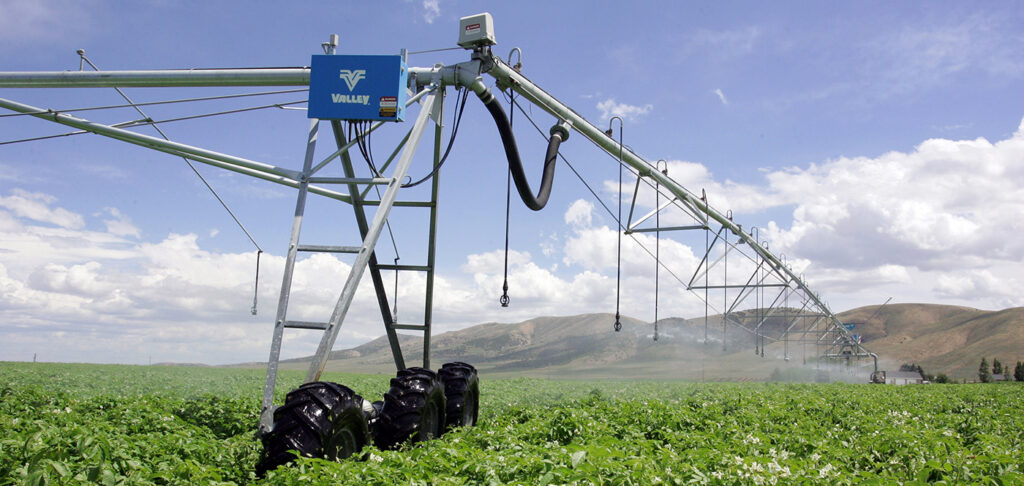
Until recently, AusNet had pointed landowners to a document about living with transmission line easements that listed prohibited farming activities near the infrastructure. However, since the ABC and farmers sought to clarify the restrictions, the link to the document has been removed. In a statement, AusNet said the document related to existing infrastructure and it would work with farmers to develop a new guide specific to this project.
“New infrastructure for the project will be designed to ensure it has the least amount of impact possible on current land use, including farm operations,” it said. “This means that once we have narrowed down to a single corridor, we will work with potentially impacted landowners to take into account existing farming practices where possible.” More information about the path of the transmission lines should be announced in the middle of the year. AusNet said it had consulted with potentially affected communities over the past year and would continue to do so.
‘A catastrophic change in value’
The document had included restrictions on spray-gun irrigation as well as farming machinery. “Putting these power lines through, you’re converting this from the most flexible productive and irrigated horticultural land to dryland grazing, which is a catastrophic change in value,” Ms Myers said. She said one of the transmission line options could take out 20 per cent of their irrigated potato area and would prevent aerial spraying.
“We use spray-gun irrigators, which are expressly prohibited … the next big one for us is any machinery over 3 metres would require a permit,” she said.
Ms Myers said they had been told compensation payments would be made. “However [AusNet] has been very clear that as we still own the land, and are able to use the land despite it being an incredibly reduced capacity, the payments would be minimal.”
Just down the road at Blowhard, Geoff Crick said he faced a similar situation with one of the proposed routes to cut his farm in half. His family has farmed the land for 103 years, and their seeding-potato operation has supported three generations. “It would break our family’s heart [if we couldn’t farm this land] … we’ve worked long hours here seven days a week,” he said.
Mr Crick said he was concerned about the potential disruption to agriculture in the district. “If the restrictions under the power lines are significant that could put us out of business, from a potato grower’s point of view,” Mr Crick said. “And we could say shift it a mile north, but then that cuts somebody else’s farm.”
Future food security
His concerns for the region’s farms are shared by food giant McCain. McCain Foods runs a large processing facility in Ballarat and estimated the project could affect 29 local growers.
In a statement, the company said it was concerned about the potential loss of some of the best soil in Australia. “With highly efficient centre pivot irrigation, which maximises the application of our precious water resources, our growers in this region produce some of the best quality and highest yielding potato crops in the world,” a spokesperson said.
“Australia is a country of limited high-quality soils so this productive land should be protected and farmed sustainably for the food security of future generations.”
Underground lines not feasible
Multiple community groups have formed in opposition to the proposed infrastructure and are calling for the transmission lines to be built underground. “That can give us the perfect balance between renewable energy, which is critical to our future, and climate change, food security and fibre security,” Ms Myers said.In a statement, AEMO said it was aware there was a strong preference for the transmission lines to run underground and said the option was considered at the start of the process but was not commercially feasible.
“Building transmission cables underground would be in the order of up to 10 times more expensive than the equivalent overhead option,” it said. “In comparison, an overhead option would deliver similar network benefits at a significantly lower cost to Victorian consumers who ultimately fund the project.”
The project originally proposed the transmission line running from a new terminal station north of Ballarat to Bulgana to be 220 kilovolts, but the state government’s Renewable Energy Zone Development Plan has now proposed increasing that section of the project to 500-kilovolt lines.If approved, that would mean taller towers and larger transmission line easements.In a statement, a government spokesperson said the project was going through a “rigorous environmental assessment process”.
“[The process] will make sure that the local community can have their say about any concerns they have, including farming and agricultural issues,” the spokesperson said.”Local residents, farmers and members of the public will have a further opportunity to have their say on the project when the environment effects statement is publicly exhibited.
